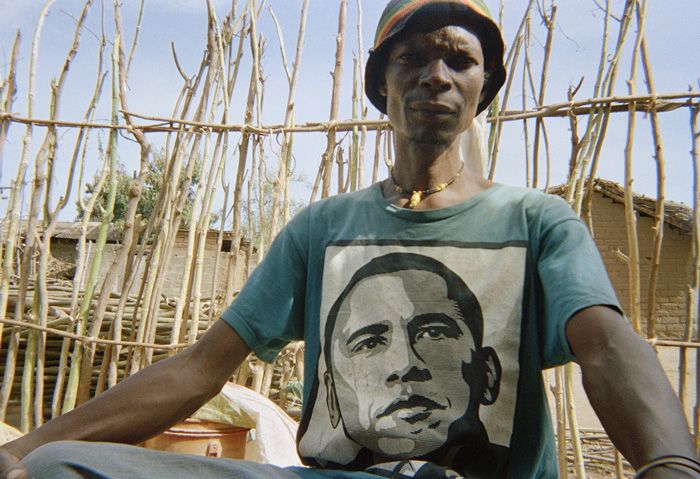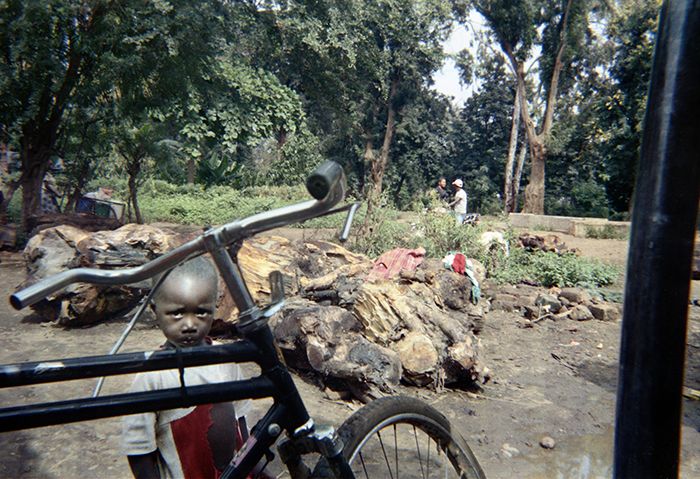blog
Raul Guerrero’s “The Disposable Project” by Katie King
In 2011, Raul Guerrero traveled to Moshi, Tanzania to volunteer with Born to Learn, a program providing students in low income situations the opportunity of an education. Once in Moshi, Raul sought to give his students a creative outlet that would help them to become confident, articulate, and responsible individuals. Drawing on his photography background, Raul decided to supply nine children in the program with one hundred disposable cameras. By doing so, he gave those children more than rolls of film encased in plastic cameras; he gave them the space to dream, to explore, and to create.
As photographers, most of us are familiar with the worlds photography can build. The emotional connection that we find in the portrait of a loved one or a stranger. The moments we can capture. The control it can allow us.
I understood why Raul would go to photography as a way of teaching his students lessons about life and learning. The question I asked Raul was, “Why disposables?”
Raul’s response was thorough, informative, and eye-opening.
“I was originally considering distributing digital point-and-shoot cameras, but decided on using single-use cameras for a handful of reasons. To someone unfamiliar with photography, these toy-like cameras can be deceiving in the sense that they might not appear to be “real” cameras. Knowing that I was going to be passing these cameras out to kids, I wanted to avoid putting them in harms way. Supplying inexpensive disposable cameras was a way to avoid this. Interestingly enough, most people in the community didn’t believe that these were real cameras.
“I was also fascinated by the term ‘disposable’ and the idea of using cameras that are considered expendable by society. Despite how these pieces of equipment are often overlooked in today’s digital world, the images produced were surprisingly intimate and beautiful in their imperfection. They are documentation of what these kids chose to remember, depicting their values and culture. Although they were just recently introduced to photography, and are considered amateurs, the project is a testament to the power of art and how something considered disposable could be taken out of context, and highlighted as something of priceless value.”
I found the use of disposable cameras by students struggling for the privilege of an education incredibly profound. The Disposable Project explores human connection through disposable technology, a fitting metaphor for the students’ situation.
I asked Raul to tell me more about his students. He wrote to me about Jenifer, the only girl able to participate in The Disposable Project, saying, “Jenifer Wilson… had a great eye and was very precise in capturing transient moments. It was also quite intriguing how strong of an individual she was. I clearly remember a basketball game we played and how aggressively she handled the ball. Jenifer could definitely carry her own, which I’m sure correlated with the confident production of her striking images.”
Raul connected with his students, and they connected with their photography. At first, I thought that because of the film format of his project, the students would not be able to see their own work. Raul assured me otherwise.
A few stores in Moshi still developed color film. When each camera was used up, Raul took the film to be developed and was able to present each student with 4×6 prints from their camera. During critiques, they would pick their favorite and least favorite images, explaining to Raul why they picked the photos they did. After critiques, the students kept the physical photos while Raul held onto the film.
At first, Raul wasn’t sure what he was going to do with the film. After he left Moshi, an idea started to form in his head, and with the help of Kickstarter, Raul has been steadily working on producing a book showcasing over 60 of the student’s photos. The Disposable Project is the story of nine extraordinary students and photographers, Alex Charles, Jenifer Wilson, John Leo, Kamili Kalist, Peter Michael, Petro Ngowi, Samson Modest, Sebastian Simon, and Stanley Felix. Raul is making sure that story is being told.
At the end of our interview, Raul left me with the following wish, that “The Disposable Project can contribute to the social good by providing inspiration, helping spark ideas, and attesting to the power of art.”
I believe it can.
To learn more about The Disposable Project, you can visit the-disposable-project.com.
Events by Location
Post Categories
Tags
- Abstract
- Alternative process
- Architecture
- Artist Talk
- artistic residency
- Biennial
- Black and White
- Book Fair
- Car culture
- Charity
- Childhood
- Children
- Cities
- Collaboration
- Community
- Cyanotype
- Documentary
- Environment
- Event
- Exhibition
- Faith
- Family
- Fashion
- Festival
- Film Review
- Food
- Friendship
- FStop20th
- Gender
- Gun Culture
- Habitat
- Hom
- home
- journal
- Landscapes
- Lecture
- Love
- Masculinity
- Mental Health
- Migration
- Museums
- Music
- Nature
- Night
- nuclear
- p
- photographic residency
- Photomontage
- Plants
- Podcast
- Portraits
- Prairies
- Religion
- River
- Still Life
- Street Photography
- Tourism
- UFO
- Water
- Zine






Leave a Reply